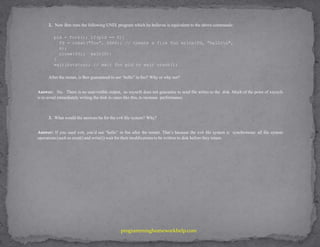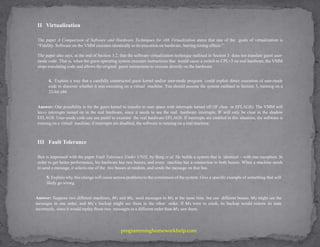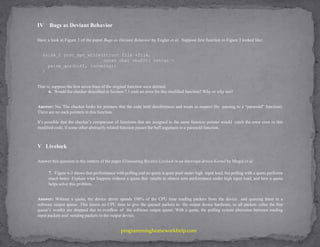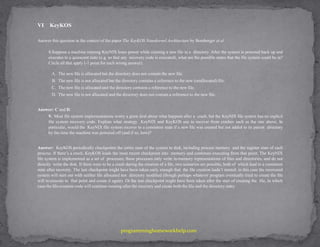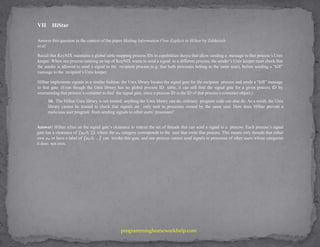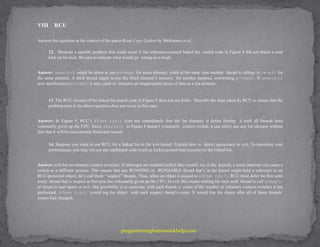The document discusses various technical concepts and scenarios related to file systems, virtualization, fault tolerance, and concurrency in programming. It details experiments conducted by Ben involving crash recovery in an xsyncfs file system, the behavior of xv6 file system, and explores principles from several academic papers on fault tolerance and operating systems. Key findings include the guarantees provided by xsyncfs, the implications of hardware vs. software virtualization, and the challenges associated with message ordering in distributed systems.


